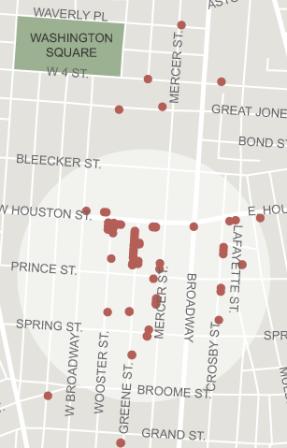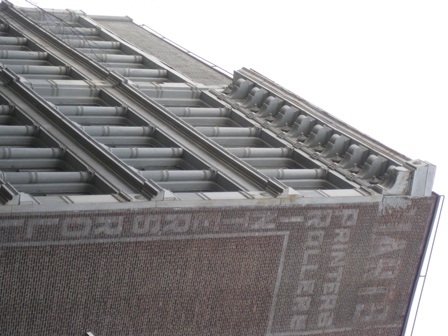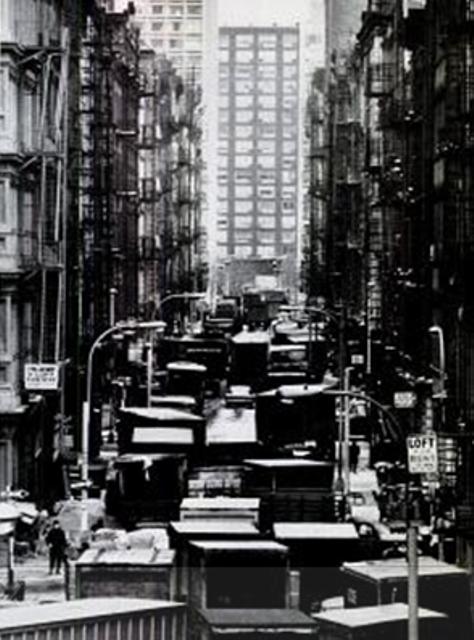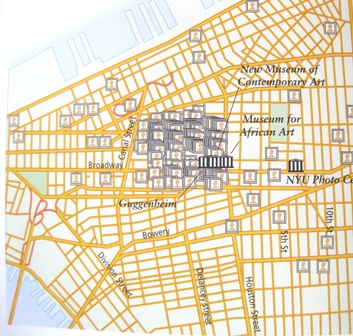Wilderness to brothels to Apple store: the History of Development in one block
We usually analyze Development at the national level. Why not other levels? At the other extreme, here is a short and surprising illustrated history of one city block. Before Europeans arrived, it was a wilderness lightly inhabited by the Delaware ethnic group.
By the late 1600s, this block was part of a hilly 200-acre farm owned by the prominent Dutch official Nicholas Bayard (1644-1707). By the time of this painting in 1768, there was more development to the south, but this farm was still owned by the Bayard family.
A map in 1782 shows a 100 foot hill and Minetta Creek. The hill would later be levelled and the creek paved over.
In the summer of 1822, a yellow fever epidemic in the city to the south prompted an exodus of wealthy residents to this block. Anthony Arnoux, a merchant tailor, built this house in 1824. The Arnoux family would remain until 1860, when they relocated further uptown.
Their exodus reflected the deterioration of the neighborhood. The location of many hotels nearby on Broadway fueled a boom in prostitution in the 1850s. In this one block alone, there were 23 brothels. In 1862, Mary Ann Temple was arrested for running a whorehouse in the former Arnoux house.
The next boom was in more traditional sectors. The construction of a railroad depot nearby and good transport connections to national and international markets fueled a neighborhood boom in factories and warehouses. In 1880, this factory was constructed, next door to the old residence and brothel, using the cast iron process that made it possible to build 6- and 7- story buildings with spacious rooms and high ceilings. The process was pioneered by James Bogardus, who had built a cast iron factory downtown in 1848.
Alas industrial booms don't last forever, and in the 20th century the neighborhood became a decaying industrial wasteland.
The powerful urban planner Robert Moses wanted to raze the neighborhood for his 8-lane Lower Manhattan Expressway, which he had first proposed in 1928. His plan was finally approved by the City Council and Mayor Robert Wagner on February 13, 1961. Opposing Moses was the great neighborhood activist and author Jane Jacobs, whom New York police arrested at one point for "inciting to riot." But on August 21, 1969, Mayor John Lindsay finally killed the project.
In 1967, with real estate prices depressed by the uncertainty about the Expressway and the deterioration of the neighborhood, a Lithuanian-American artist named George Maciunas had bought one of the old factories and converted into a studio and residence for his artist co-op. Many artists followed in his wake. The neighborhood was not zoned for residences, so the pioneer artist-residents lived illegally, finding ways to tap into power and water supplies.
Eventually, city bureaucrats passed an artist exemption legalizing the arrangement. The neighborhood was reborn as an artist colony and attracted a huge concentration of art galleries.
The ultimate culmination of centuries of development was of course the Apple store located at the end of the block.
Its history had been a series of unexpected events involving many actors, from Nicholas Bayard to the yellow fever mosquito to Anthony Arnoux to James Bogardus to Jane Jacobs to George Maciunas, few or none of whom could have anticipated the outcomes of their actions. Like many other examples, Soho illustrates that a lot of economic development is a surprise.
Photo credits: 1,2,3: Manahatta; 4 author; 5 New York Times ; 6,7 author; 8 Life Magazine March 27, 1970, 9 The Historical Atlas of New York City; 10, 11 author; 12 photo from Google Maps.
 From Aid to Equality
From Aid to Equality












